How to grow calibrachoa – expert tips for this sun-loving container garden staple
Calibrachoa can’t be beat when it comes to color choices to enliven baskets, window boxes and porch pots
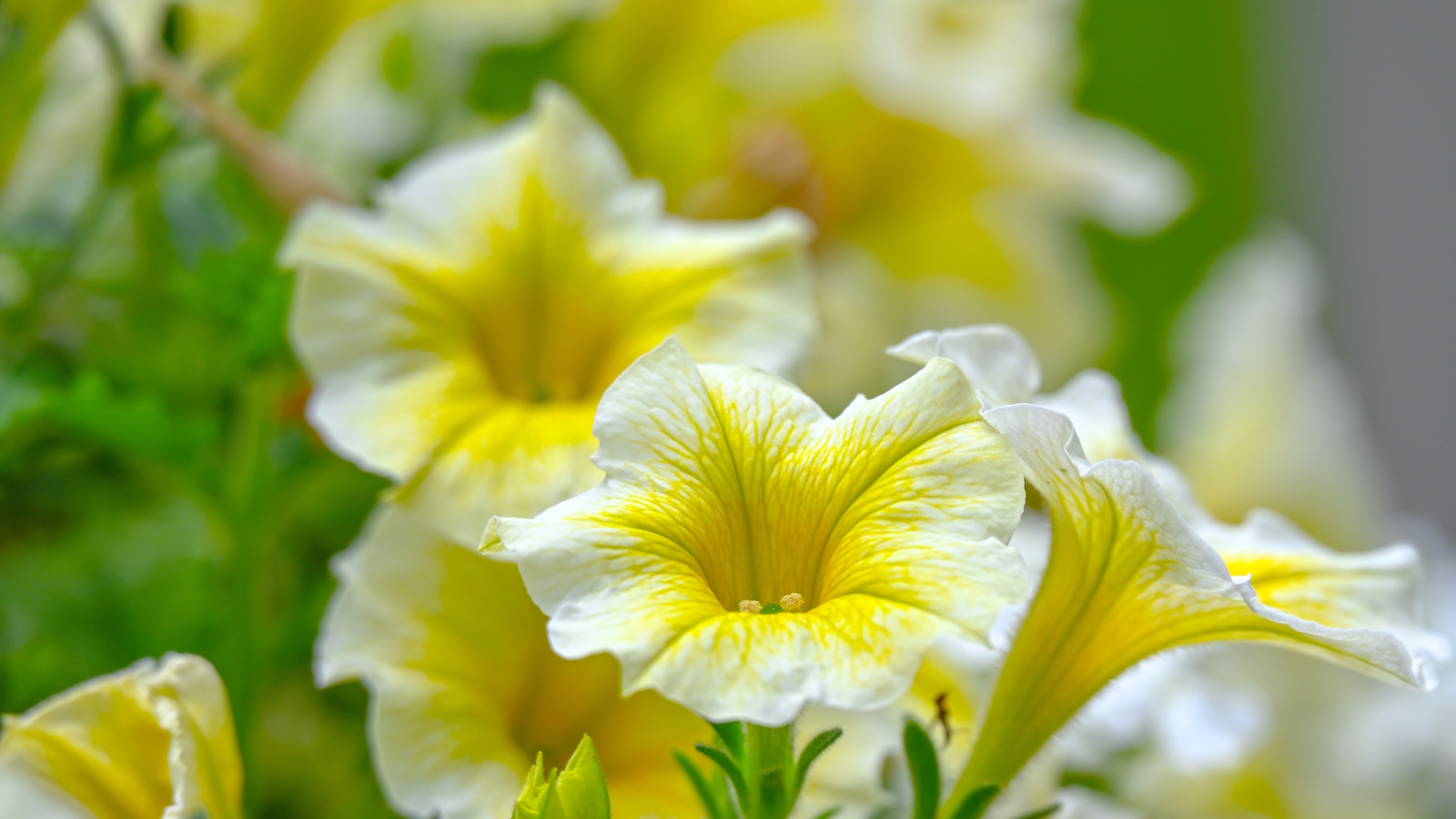

Calibrachoa, commonly called million bells, is one of summer’s most reliable and awe-inspiring annuals. Celebrated for its dazzling array colors, this native of South America produces a prolific amount of petunia-like blooms and is best suited for use in baskets, window boxes and container gardens in full-sun locations.
Aside from its jaw-dropping shades, calibrachoa is appreciated by homeowners and professional gardeners alike for its resilience after rain storms as well as for its non-stop flowering from spring to first frost. Hardy in USDA zones 9-11 as a perennial, it’s become a staple component in showstopping container combinations in cooler regions, where it is grown as an annual.
If that hasn’t convinced you to give calibrachoa a try, consider that it is one of the best trailing plants for hanging baskets you can use to beautify your outdoor living space. In fact, calibrachoa is considered an ideal 'spiller' in the container design concept of 'thriller, filler, spiller.' Here, two plant experts share their years of experience growing and designing with calibrachoa.
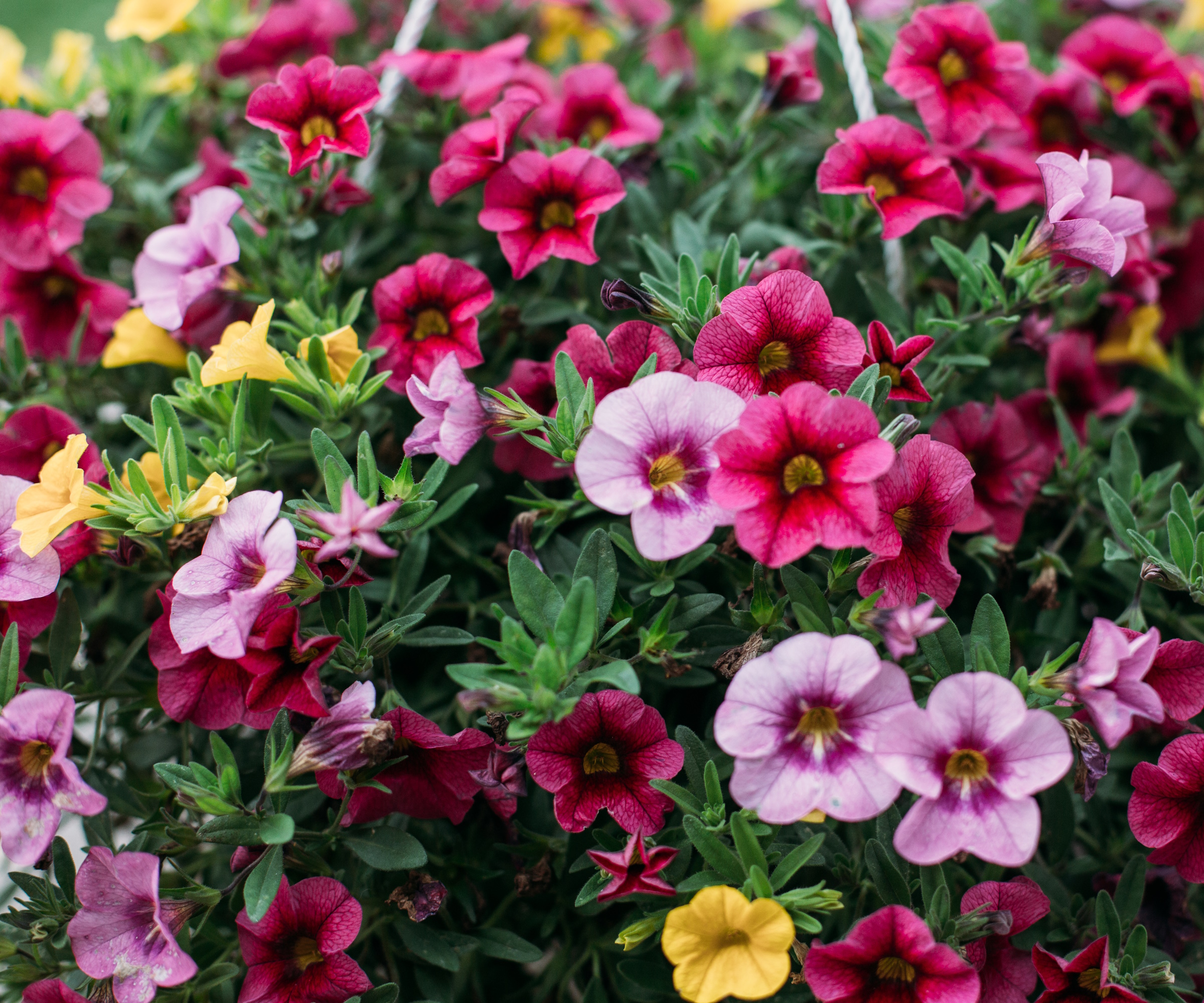
How to grow calibrachoa
In the 1980s, breeding company Suntory Flowers began work on the wild calibrachoa native to Brazil, changing some of its characteristics to make it a plant better suited to home gardens.
Researchers selected for stronger and more compact growth, more blooms and a wider color range. The hybrids that resulted were released into the market in the 1990s as the ‘Million Bells’ series, the world’s first commercial line of calibrachoa.
‘Million Bells’ offered gardeners a petunia-like plant that didn’t need constant deadheading and could produce lots of flowers all season long. The name million bells has become linked as a common name to all calibrachoa hybrids, even if the varieties have been developed by other breeding companies.
Growing habits of calibrachoa
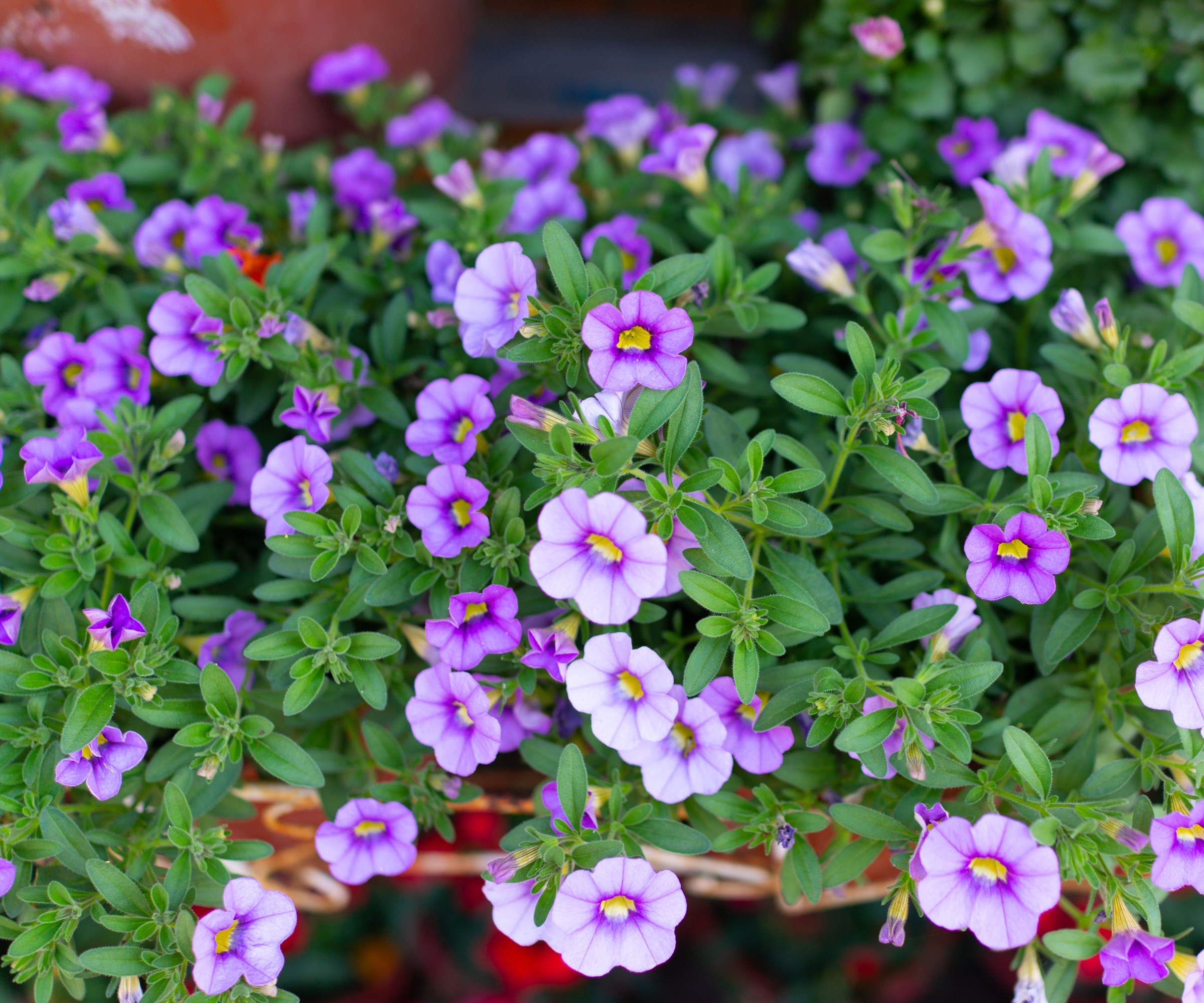
‘Generally, people refer to all of them as million bells,’ says Delilah Onofrey, Marketing Director for Suntory Flowers, North America. ‘There are differences though; the ‘Million Bells Trailing’ would be the classic older style. Now calibrachoa have been bred to be more mounding and even more compact,’ she explains. And the available flower colors and patterns have ‘exploded,’ she adds, mostly from the work of other breeding companies.
Design expertise in your inbox – from inspiring decorating ideas and beautiful celebrity homes to practical gardening advice and shopping round-ups.
‘Few types of plants have experienced the kind of overnight success that calibrachoa has,’ says Jan Johnsen, Principal of Johnsen Landscapes & Pools in Westchester County, New York. ‘The reason for its success is its range. I love its range of color combinations. I love how it’s easy to care for (there’s no deadheading) and, of course, I love its heat tolerance and durability.’
‘They’re definitely not recommended for beds,’ says Delilah. ‘Even though I've seen it done, it doesn't do it justice.’ She says calibrachoa looks full in a basket or combo and speculates that planting in a garden bed results in calibrachoa looking flat. ‘It just doesn't seem to fluff out as nicely on the ground,’ she says.
A wide variety of outdoor plant containers are available at Wayfair.
Jan Johnsen says they grow much better in planters and raised beds than in garden beds. ‘From a design standpoint, I like to use them in raised beds in a sunny spot; they tend to trail over the top of the wall.’ She suggests clipping them back at least once during the season. ‘They get a little leggy, so don't be afraid to clip them back hard to encourage new growth.’
Jan is a big fan of the variety ‘Superbells Hollywood Star’. ‘It has rose pink petals with a bright yellow throat, and the flower is kind of outlined,’ she says. ‘That’s the beauty of calibrachoa, not only the colors, but the patterning.’
What she likes about this variety is the colors don’t fade in the heat of summer. Jan also loves to plant ‘Superbells Lemon Slice’, a yellow-and-white pinwheel pattern that she plants with a deep burgundy-colored coleus and a ‘Diamond Frost’ euphorbia to produce that classic “thriller, filler, spiller’ design in a container.
'Superbells Lemon Slice' live plants are available from Amazon.
But for Jan, there’s no need to stray outside of the calibrachoa category very much. ‘The beauty of calibrachoa is you can get several different colors or patterns, pot them all together in a pot and just let it happen, just let it spill out,’ she suggests.
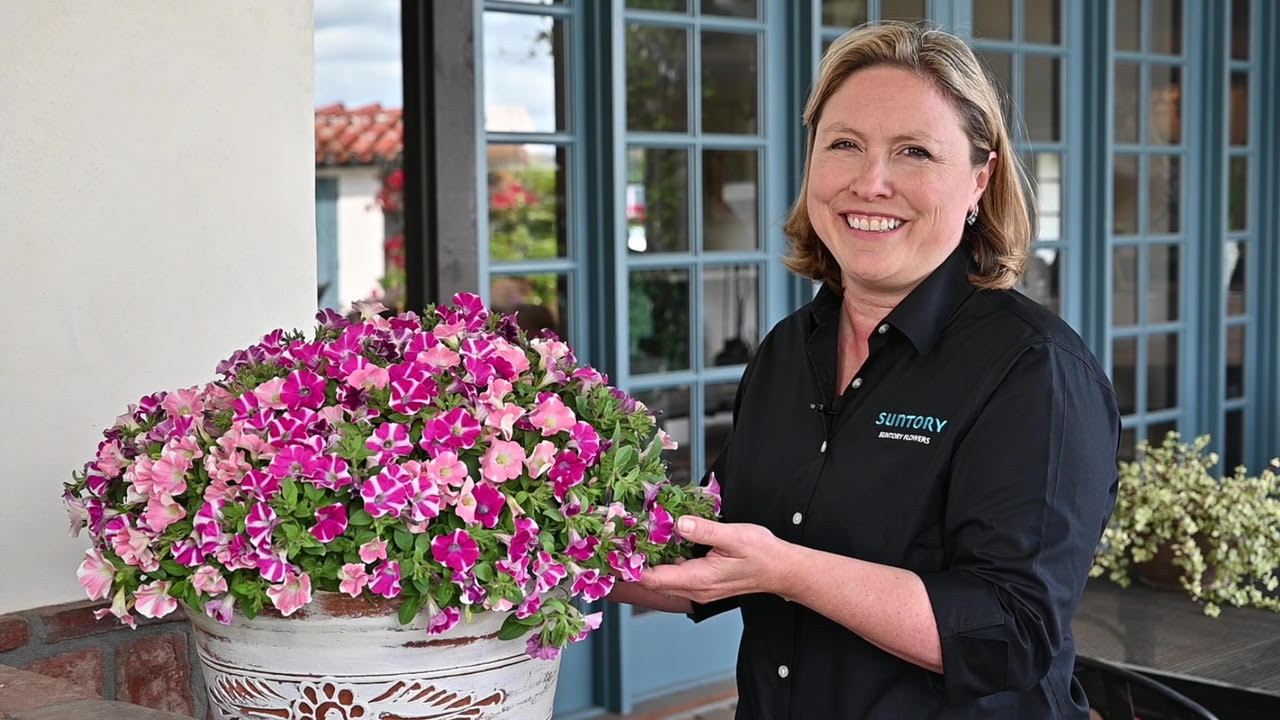
Delilah Onofrey is Marketing Director for Suntory Flowers, North America and is Ambassador for America in Bloom.

Jan Johnsen is a principal of Johnsen Landscapes & Pools, a design/build firm in Westchester County, New York. She is an admired landscape designer and author. She was the 2019 recipient of the prestigious ‘Award of Distinction’ from the Association of Professional Landscape Designers.
Jan shares her thoughts and informative tips on plants and garden design on her Substack page, Gardentopia .
Care guide for calibrachoa
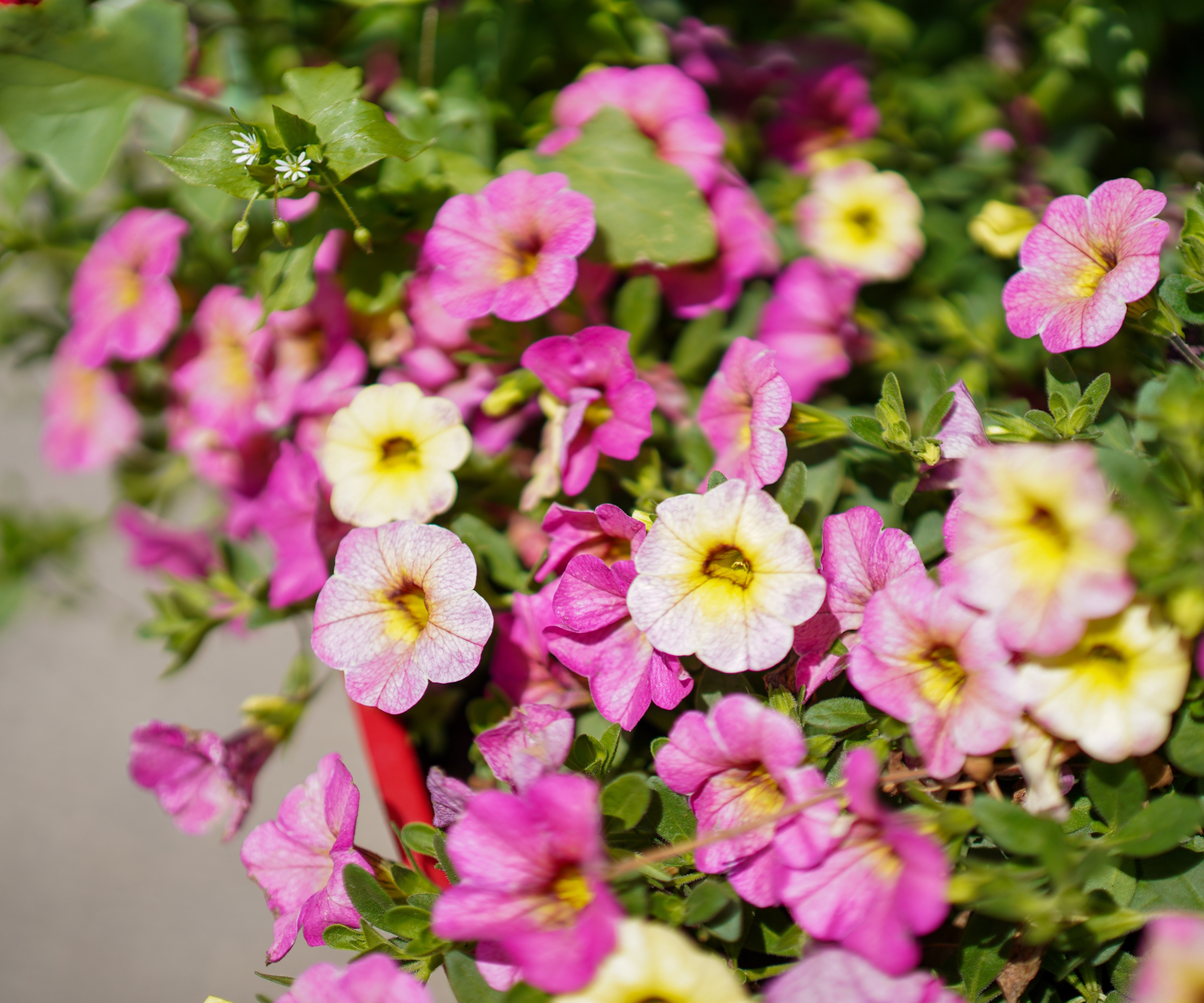
- Soil: Calibrachoa grow best in light, well-draining soil that is slightly acidic. A well-draining potting mix rich in compost is best for calibrachoas when planted in baskets, containers and raised beds.
- Light: ‘They mostly like full sun, but will tolerate partial shade,’ Delilah Onofrey suggests. She says it depends on how hot your climate is; in hot climates, morning sun is preferred with afternoon shade.
- Watering: Delilah says there's a lot of conflicting advice about how to best water calibrachoa. ‘It seems like the key to success, is to be consistently moist or a little damp; don’t overwater, but don’t keep it too dry.’
- Fertilizing: You can go one of two ways with the fertilizer, according to Delilah: a granular fertilizer once a month, or a low-strength liquid every week. Jan Johnsen feeds a third way: ‘Add some slow-release fertilizer when you plant it, but then a month later add a light solution of liquid fertilizer, just because it is it likes to be fed,’ she suggests.
- Pruning: ‘The beauty of a calibrachoa over a petunia is you don't need the deadhead,’ Delilah says. ‘They are truly self-cleaning.’
- Pests and Diseases: If calibrachoa have “wet feet” due to poorly draining soil, it often results in root rot. Look for the plants wilting despite the soil being moist, and for lower leaves to turn yellow and drop. Aphids and spider mites can also be a problem for calibrachoa.
FAQs
Why are my calibrachoa’s leaves turning yellow?
Yellowing leaves can occur if they are overwatered, have poorly draining soil or are not getting enough nutrition, especially iron. Try reducing your watering and ensure your soil is draining properly. If the yellowing leaves persist, use an iron-rich fertilizer or one formulated for acid-loving plants.
Fertilizer for acid-loving plants is available at Walmart.
Its critical to know that calibrachoa are not just tiny petunias. While having larger blooms, petunias also have a more upright and spreading habit rather than a tendency to cascade. They can also tolerate brief dry spells better. Calibrachoa, on the other hand, require more frequent watering and are heavier feeders than petunias. And unlike petunias, calibrachoa are self-cleaning and do not need their spent flowers removed.
If you’re looking for colorful annuals to fill your summer pots, you can find inspiration in our guide on summer container planting ideas, including some fun pairings with calibrachoa and petunias.

Ellen Wells is a horticultural communications consultant with 30 years experience writing about all aspects of the gardening world, and for GardeningKnowHow.com since 2024. She specializes in retail horticulture, vegetable gardening and tropical plants. Ellen is based in southern New England where she gardens in zone 7a.